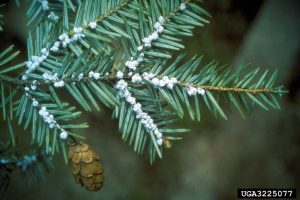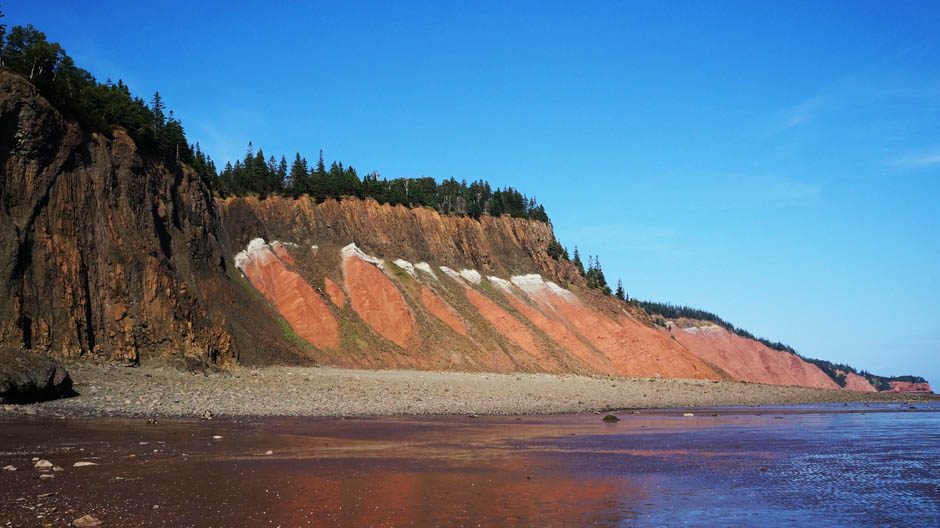
I was relieved a few days ago not to see signs of the “Hemlock Vampire” on this hemlock in Halifax Co., but will keep on looking.
Click here for a larger version of the poster.

Hemlock Woolly Adelgid. “Their name comes from waxy white filaments they make to protect themselves from drying out. In a heavy infestation, hemlock trees can look gray from all the “wool” on twigs and branches. They can’t fly, but are spread by wind and also hitch rides on the feet of birds, which can carry hemlock wooly adelgids for long distances. These “hemlock vampires” were first discovered in 1951 in Virginia, and by 2005 had spread to fifteen other states.
Source: Paul Hetzler, Cornell Cooperative Extension
Photo source: Connecticut Agricultural Experiment Station, Bugwood.org
Some Related Posts:
– Hemlock Woolly Adelgid is now in SW Nova Scotia
Post, Aug 6, 2017
– Hemlock vampires are firmly established in southwest Nova Scotia
Post, Jan 10, 2018
– New documentary on Hemlock Wooly Adelgid in Nova Scotia
Post, Sep 1, 2018
